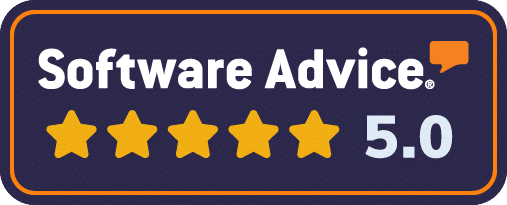The DAPEE Model of Project Management
Project management and problem-solving strategies contain many similar components. First, groups need an accurate understanding of the goal or problem to be solved. Then they can devise a comprehensive plan for achieving the desired results. Next comes an efficient execution of that plan, and, finally, a systematic evaluation of the results. These components describing the basic structure of a task management or problem-solving strategy will be referred to DAPEE model of project management.
-
- Define the project
- Analyze the problem or task
- Plan the solution or strategy
- Execute the plan
- Evaluate the outcome
This model describes how groups can systematically and effectively work toward long-term solutions. Keep in mind that this is not a purely linear model, as real world problems are often complex, ambiguous, and ill-structured. While the general flow of the project moves from top to bottom, there are often times when a group will need to return to a previous stage.
Define the project or goal
The first task of a project relates directly to the previous section. Effective teams are guided by SMART goals that are Specific, Measurable, Attainable, Relevant and Time-bounded. Groups must know where they are going before they can figure out the best way to get there. Open, direct, and mature dialog allows members to verbalize unspoken assumptions and understand others’ perspectives. The process itself helps engage members, build cohesion, and define member expectations and roles.
Analyze the problem or task
Problems and projects do not exist in a vacuum. There is always a context, history, and system within which they operate. Organizational learning expert, Peter Senge, suggests that today’s problems emerge from yesterday’s solutions. In other words, current problems are often the unintended results of past attempts to solve other problems. For example, when Nissan Motor Company needed to improve cash flow in the early 1990s, they cut back on product development. While money was saved in the short-term, they were losing market share and revenue a decade later due to an outdated product line.
When problems or projects are not understood in a larger systemic context, solutions have a tendency to generate short-term gains that can turn into long-term liabilities. Before an effective plan of action can be created and executed, teams must thoroughly understand all of the issues related to their project. Unfortunately, members often jump to solution planning before completely understanding and analyzing the problem. Comprehensive analysis requires an accurate assessment of the current situation or state of affairs. Thus, the first step in effective problem-solving is to restrain from brainstorming possible solutions and, instead, have the discipline to collect a broad range of information about the problem.
While past experiences and personal opinions frequently influence group discussions, teams benefit when they have actual data upon which to design, execute and evaluate plans. Evidence-based decisions require a substantial amount of data from which to derive effective solutions. A well-formulated action plan is built upon concrete information and critical dialog.
Plan the solution or strategy
During the planning stage, high performing teams allow a sufficient amount of time to brainstorm possible ideas or solutions to the problem while withholding judgement as those ideas are being generated. Then once all the ideas are out on the table, they can be systematically critiqued and/or combined.
Contrary to popular belief, a good brainstorming session is first measured by the quantity of ideas generated versus the quality of those ideas. Evaluating the quality of various options comes next. Team members should be encouraged to participate without self-screening or censuring their thoughts, as the most creative ideas are often withheld out of fear of what others might think. In addition, it is helpful for teams to appoint a recorder or scribe to keep track of all the ideas that are generated so that none are lost.
Ideas can be presented and discussed in any number of formats. In some groups, members shout out ideas spontaneously. In other groups, the leader solicits ideas from each member in a systematic way in order to give everyone an opportunity to contribute. Another useful method requires members to write one idea per index card or Post-it Note for as many ideas that they can generate. Cards are then collected or posted and a master list is created. Once a comprehensive list of possible options has been generated, critical discussion can commence.
Teams must evaluate the ideas that have been generated with critical dialog and discussion. When the group has sufficiently discussed the various ideas and has enough supporting evidence to make an informed decision, they are ready to choose the best course of action. There are a number of ways groups determine the specific components of their project plan. Decisions can be made by consensus, group vote, or by leader proclamation. Alternate approaches to group decision-making will be discussed in a later post.
After teams have discussed various options and made a decision, it is time to make a plan. A work plan identifies, defines, and assigns the tasks that need to be completed by group members or sub-groups. Since certain tasks are dependent on the completion of other tasks, due dates and completion schedules are formulated. After the tasks are defined, sequenced, and scheduled, group members either volunteer or are assigned to those tasks.
Execute the plan
The best decision, solution, or plan is only as good as its implementation. Organizations spend hundreds of millions of dollars every year hiring consultants to develop strategies and make recommendations that never get fully implemented. In fact, the “ability to execute strategy” is one of the top non-financial variable that analysts consider in determining a company’s stock value. Once work tasks have been assigned and deadlines have been established, the group is ready to execute their plan.
During the execution phase, a well-defined communication structure that reports on both the progress and the inevitable problems is invaluable. Status meetings allow members to update the team on their own tasks and, in turn, hear how the project is developing in other areas. Typically, individuals and task groups report (a) the progress they’ve made on specific tasks, (b) any problems or obstacles they may have encountered, and (c) whether or not they are still on schedule.
The answers to these questions will determine whether resources need to be reallocated to meet deadlines, whether deadlines need to be adjusted, or whether more planning or analysis is needed. Team members may be tempted to minimize their difficulties and report their progress in overly positive terms in order to appear competent and save face. Conversely, when problems are openly acknowledged and discussed proactively, they can be effectively resolved through the collective wisdom of the group.
Evaluate the outcome
The final step in the DAPEE model is evaluation. After defining project goals, analyzing relevant data, and creating and executing work plans, the group is ready to evaluate the results. As previously stated, a well-defined project goal or problem statement will have clear and measurable criteria from which to evaluate success. So, the evaluation phase compares the project outcomes to the initial criteria for success. It is also helpful to evaluate the relative strengths and weaknesses of the team and how they might have improved their results.
A sample of some of some evaluative questions include:
- What part of the project are you most proud of?
- How did the group go about making decisions?
- What part of the preparation process created unfinished business (i.e., tension which hasn’t been resolved)? What needs to happen about that issue?
- Who were the unsung heroes for this project?
- Who seemed to work the hardest?
- Who were the most influential members in the process?
- What could have been done to improve the presentation?
Keep in mind most workers have sophisticated defense mechanisms that prevent them from accepting meaningful feedback. A competent facilitator can help individuals move past their tendency to blame others, take responsibility for their own shortcomings, and hold themselves and others accountable to standards of excellence.
Conclusion
The DAPEE Model is a solid framework for managing a team project to completion. For the final evaluation step, we recommend a G360 Team Survey.


